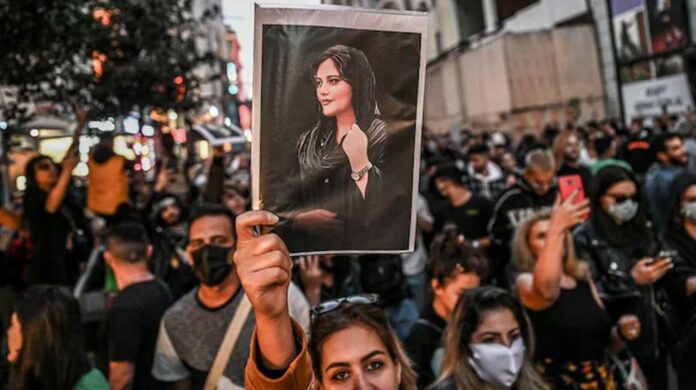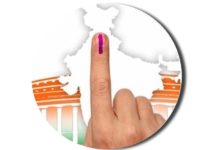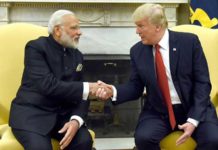Iran is reeling under the ongoing protests against the mandatory wearing of hijab and the repression of the country’s Islamic fundamentalist State. Mahsa Amini, a young woman who was arrested by the ‘morality police’ for not wearing the hijab properly, fell into a coma due to brutal assault by the police, and eventually died on September 16. Subsequently, these protests have erupted.
Iran is a hardline Islamic fundamentalist country. Its State structure is also different from that of other countries. Although the President and parliament are elected by the people, various organs that are not elected by the people act as organs of the State. The representatives of the people cannot act arbitrarily beyond the control of the clergy.
The Supreme Leader of Iran, elected by the clergy and appointed for a lifetime, is superior to the President elected by the people; he has the final say in the government’s decisions.
The Iranian people, especially women, have been subjected to various forms of oppressions by this religious fundamentalist mob for a long time. There is a separate section called ‘Morality Police’ (Gasht-e-Ershad) to monitor people’s adherence to Islamic dress codes and customs.
Iranian women could not bear to see a 22-year-old girl being attacked by the police as she did not properly wear the hijab to cover her hair completely as per the Islamic law. So, the women are determined to put an end to the injustice done in the name of ‘religious morality’ by the clergy, who controls the State power.
Anguish against Oppression and the Desire for Democracy!
The women, who gathered in front of the hospital where Mahsa Amini died, said, “We swear on Mahsa’s blood; Iran will be liberated”. They also raised slogans against the country’s top leader, Ali Khamenei.
Thousands of women gathered at Mahsa’s funeral the next day; They untied their hijabs before the police officers present there and threw them away. The police’s batons and guns could not intimidate the Iranian women, whose anger against religious oppression and the desire for democracy were emotionally synergized.
The protest immediately engulfed nearly 80 cities, including Iran’s capital, Tehran. In a square in Tehran, up to 4,000 people gathered to register their protest against the mandatory hijab. There were also hartal at various places. Slogans such as “Death to Khamenei” and “Akhunds (shia clerics) must get lost!” echoed throughout the streets of Iran.
Also Read: ‘Twitter 2.0’ – Propaganda Machine of Fascists!
The anti-hijab struggle was centered in almost all universities in Iran. All the students, irrespective of their gender, participated in the protests. On September 19, students from seven universities gathered in Tehran and marched.
In early October, Iran’s school children also joined the protests. Throwing off the hijab, the students chanted “Death to the dictator”, referring to the top leader Ayatollah Ali Khomeini.
On September 20, men and women gathered in Sari of Mazandaran province. There the women burned hijabs; they danced around the fire and celebrated. A woman threw off the hijab in front of everyone and cut off her hair. Following her, every other woman took off their hijabs and threw them away and cut their hairs off. It became a form of protest.
“We are all Mahsa Amini” – every woman who threw off the hijab and cut off their hair shouted. “Mahsa is all of us, you fight us, we’ll fight back” – this is what Iranian women are conveying to the clerics through their protests.
“This is not just a struggle against the hijab, we know what we have to wear; it’s a fight to proclaim the privacy of our bodies”, Iranian women say.
In early October, the struggle spread to various countries. Iranians living abroad demonstrated in the countries where they live in support of people protesting in their own country. In many countries, including Italy, France, Germany, Sweden, Switzerland, Turkey, Canada, the United States, Australia and South Korea, there were demonstrations in support of the Iranian women’s struggle.
In Berlin, the capital city of Germany, about 80,000 people attended the march on October 22. Iranians living in other European countries, as well as the United States and Canada, have travelled to participate in the rally.
Specialty of the protest!
The Iranian women’s struggle against oppression has a historic tradition. Before 1979, when the Shahs blessed by the US and the West ruled the country, Iranian women have protested against the ban on wearing hijab; the hijab ban was imposed on the grounds of enhancing the civilization.
In 1979, the Iranian Revolution overthrew the Shahs, who were blessed by the West. It is also known as the Islamic Revolution. Khomeini’s government, which came to power after the revolution, declared Iran as an Islamic republic and imposed Islamic dress code and customs on the people. Iranian women have also fought against the Khomeini government’s policy of compulsory hijab. Though a morality police unit has been created, there have been protests against it.
Also Read: Rishi Sunak: A hybrid form of Fascism!
But this struggle in the wake of the death of Mahsa Amini is different in scope and essence from the previous ones. All of the previous struggles were the struggles of Iran’s educated middle class. But the present struggle has awakened the working class people as well. In particular, the working class has come out in support of the struggle.
Workers from Iran’s oil refineries and petrochemical industries are supporting the anti-hijab struggle despite various State repressions. More than a thousand workers from petrochemical plants located at the port city of Bushehr in Assaluyeh county, Damavand and Hengam have gone on strike.
Oil refinery workers are an integral part of Iran’s working class. Their participation was one of the main reasons for the success of the 1979 Iranian revolution that overthrew the US-backed Shah regime. Such militant workers support the anti-hijab struggle, chanting, “There is no need to fear, we are all together” This is causing a stir to Ali Khomeini, the head of the State.
The failure of State terrorism!
At the protest sites, women and students are being shot like sparrows. Protesting women are also victims of sexual harassment by Iran’s security forces.
According to the Guardian (on October 21), the report released by the Human Rights Activists News Agency (HRANA) revealed that 12,450 people have been arrested so far; nearly 250 people have been killed. The group said 3,000 people had been arrested in Tehran province alone, of which 835 people including 200 university students, were incarcerated.
Journalists are also being targeted. According to the International Federation of Journalists, so far 24 journalists have been arrested and 11 have been lodged in Evin Prison. Reporters Without Borders said more than 30 journalists were in prison.
The security forces are entering schools and forcing students to sing pro-regime songs. There have also been incidents of students being beaten to death for refusing to sing. Many have been arrested and jailed. Iranian students, however, are facing State terrorism with all their heart.
For example, a 16-year-old girl who was denied permission to go to school by her parents, fearing oppression by the Iranian government, says: “What good am I if I simply sit outraged at home? Myself and fellow students across Iran have decided to stand in protest on the streets this week. I’ll do it even if I have to now hide it from my parents”.
US’ intervention as a ‘defender of democracy’
The strategy of the US is to overthrow the States that act against it or obstruct its world hegemonic interests by means of a coup under the guise of ‘danger to democracy’. As such, the US is seeking to exploit Iranian women’s anti-hijab protests against the government of Ali Khamenei and Ebrahim Raisi.
The US has imposed sanctions on Iran’s ‘morality police’ responsible for the death of Mahsa Amini; It also condemned the Iranian government for its brutal suppression of anti-hijab protests. And in the last week of September, when the Iranian government blocked the Internet to suppress protests, US Secretary of State Antony Blinken announced that it would provide free internet service to Iran through Elon Musk’s ‘Starlink’ satellite, in order to protect freedom of expression.
By poking its nose into the internal issue of Iran’s religious clique and the country’s working people, the US is striving to create a regime in its favor. Earlier, in 2009, when the urban middle class was protesting against the re-election of then-President Mahmoud Ahmadinejad, the US embraced and welcomed him, in order to achieve its objective. Now, this is the second time.
On the other hand, the Iranian government is cracking down heavily on the protesting people, claiming that it is the US and Israel that are instigating the protests. The anti-hijab protest is a struggle between the religious mob that rules Iran and the democracy-desiring working people of the country. The protests will not cease until the working people win their rights. This is the reason why the struggle is growing further, despite countless repressions.
At the same time, the Iranian people, who are rebelling against their government’s repression, are obliged to defeat the conspiratorial United States, which is meddling with their country’s internal affairs.
![]() Thulipa
Thulipa









